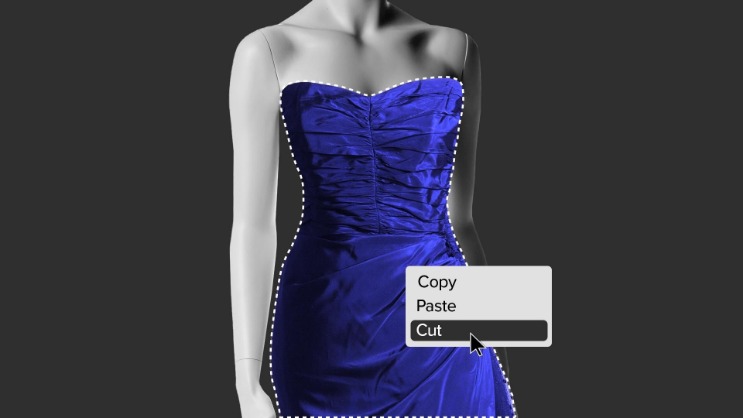In the rapidly evolving landscape of artificial intelligence, a deeply concerning and controversial application has emerged from the shadows. The ability to digitally remove clothing from images of real people, a concept once confined to the realms of science fiction, is now a stark and unsettling reality. This technology, often searched for under terms like ai undress and undressing ai, leverages sophisticated machine learning models to create non-consensual synthetic imagery. Its existence raises profound questions about privacy, consent, and the very fabric of trust in the digital age. As these tools become more accessible, the line between the virtual and the real blurs, leaving individuals vulnerable to unprecedented forms of exploitation and harm.
The Technology Behind the Illusion: How AI Undressing Works
At its core, the process known as ai undressing is powered by a class of artificial intelligence known as generative adversarial networks, or GANs. These systems consist of two neural networks locked in a digital duel: a generator that creates images and a discriminator that evaluates them. The generator’s job is to produce a photorealistic image of a nude body based on an input photo, while the discriminator’s role is to distinguish between real nude images and the AI-generated fakes. Through millions of iterations, the generator becomes increasingly adept at fooling the discriminator, resulting in highly convincing, yet entirely fabricated, nude images. This technical foundation is not inherently malicious; it’s the same underlying architecture used for creating art, enhancing photos, and even medical imaging.
However, the ethical application of this technology is non-existent when it comes to non-consensual use. These systems are typically trained on massive datasets containing thousands of images of nude and clothed individuals. The AI learns the complex correlations between body shapes, skin textures, lighting, and fabric, allowing it to predict and generate what a person might look like without their clothes. The rise of diffusion models, an even more advanced type of generative AI, has further refined this process, creating outputs with startling levels of detail and realism. The accessibility is a major part of the problem; numerous websites and applications have commodified this invasion, offering undress ai services with a few clicks, often with little to no verification of consent from the individuals in the uploaded photos.
The technical ease with which these violations can be perpetrated is alarming. A user simply needs to upload a photograph—often sourced from social media profiles without permission—to a platform like the one found at undress ai. The AI then processes the image, and within moments, generates a counterfeit nude. This seamless process belies the profound harm inflicted, reducing a person’s bodily autonomy to a simple algorithmic transaction. The technology itself is a neutral tool, but its deployment in this context is an act of digital violence, creating a permanent and damaging digital footprint for the victim without their knowledge or consent.
The Societal Impact and Ethical Catastrophe
The proliferation of AI undressing tools is not a victimless technological trend; it represents a societal crisis with devastating consequences. The primary and most grievous harm is the utter violation of personal autonomy and consent. Individuals, particularly women and minors, find their digital identities weaponized against them. A simple, innocuous photo shared online can be transformed into a tool for harassment, extortion, and reputational destruction. The psychological trauma experienced by victims is profound, leading to anxiety, depression, and in severe cases, forcing people to withdraw from online life and public view altogether. This technology effectively creates a digital prison, where the fear of being targeted limits self-expression and freedom.
Beyond the individual, this phenomenon erodes the very concept of truth and evidence. In legal disputes, personal conflicts, or public smear campaigns, the existence of a realistic-looking nude image can be used as potent, albeit fake, evidence. This creates a “liar’s dividend,” where even genuine evidence can be dismissed as a potential deepfake, allowing real perpetrators to evade accountability. The burden of proof shifts unfairly onto the victim, who must now prove that a damaging image is not real. This undermines trust in digital media and complicates the pursuit of justice, creating a legal gray area that current legislation struggles to navigate.
Furthermore, the normalization of such technology desensitizes society to digital sexual violence. When creating and sharing non-consensual intimate imagery becomes as easy as using a filter, it trivializes the harm and objectifies the human body to an unprecedented degree. This fosters a toxic digital culture where privacy is an illusion and personal boundaries are systematically dismantled. The ethical catastrophe is clear: the development and distribution of ai undressing applications prioritize technological capability and profit over fundamental human rights, creating a marketplace for violation that preys on the most vulnerable.
Real-World Cases and the Lagging Legal Response
The theoretical dangers of undressing AI are already manifesting in tangible, distressing cases across the globe. In one high-profile incident, a group of male students in Spain used an AI application to generate nude images of their female classmates. The victims, all minors, were traumatized to discover that their faces had been superimposed onto AI-generated bodies, with these fabricated images being circulated among peers. This case highlighted not only the predatory use of the technology but also its specific targeting of young people, who are often the most active on social media and, consequently, the most exposed. The incident sparked national outrage, but the legal consequences for the perpetrators were hampered by outdated laws that did not fully account for this new form of abuse.
Another alarming trend involves the use of ai undressing technology for sextortion schemes. Perpetrators scour the internet for publicly available photos, often from LinkedIn, Instagram, or Facebook. They then use AI tools to create compromising nude images and threaten to publish them unless the victim pays a ransom. These attacks are often highly targeted and can be devastating both financially and emotionally. The anonymous nature of the internet makes it difficult to track down the criminals, leaving victims feeling helpless and isolated. Law enforcement agencies worldwide are scrambling to develop the expertise and legal frameworks needed to combat this growing threat.
The legal landscape is currently a patchwork of inconsistent and often inadequate responses. Some countries have specific laws against non-consensual pornography, but many of these statutes were written before the advent of AI-generated content. Prosecutors often have to rely on broader laws covering harassment, defamation, or computer misuse, which may not fully capture the unique harm of undressing ai. There is a pressing, global need for comprehensive legislation that explicitly criminalizes the creation and distribution of non-consensual synthetic intimate imagery. Such laws must be robust enough to hold both the creators of the malicious content and the platforms that may host or enable the technology accountable, ensuring that the digital world does not become a lawless frontier for sexual exploitation.



